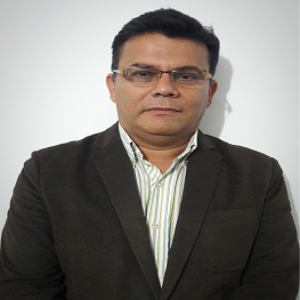Title : Selective ionic flow cells (SIFC) an alternative to treat wastewater and reduce climate change
Abstract:
One of the problems that currently occur is the pollution caused by domestic wastewater, as a consequence of the growing world population; this problem affects human health and the environment. For this reason, it is necessary to develop innovative, effective and economic techniques that mitigate this problem. Human excreta (feces and urine) are among the main pollutants present in domestic wastewater, an alternative to solve this problem is to use human excrement to produce energy, since they contain molecules with low oxidation potentials which can be used for the generation of hydrogen in a reduction process, urea is the most abundant organic substance in the urine (product of human excretion), SIFC (national patent registration number NC2017/0012602, international patent application number PCT/IB2018/058596) they are electrochemical systems developed to produce hydrogen from reduction of hydronium ions and oxidation of decomposing organic matter (excrement).
These cells are formed by two semi-cells with stainless steel electrodes: a half anodic cell in which the oxidation reaction of the organic molecules present in the human excrements takes place applying the principle of electrolysis and a cathodic cell in which they reduce the ions hydronium. (H3 O+) applying the law of chemical equilibrium, these two half cells are separated by a membrane system: a membrane of proton exchange combined with another of exchange of anions and a system of electric bridges, these systems allow selective electric transport and of the masses.
The SIFC technology has demonstrated the production of hydrogen with a purity of up to 96% (w/v). The SIFC technology has the following advantages: the hydrogen produced is a source of clean energy in the combustion process produces only water vapour and high amounts of energy, degrades organic matter through electrolysis at high potentials (12 V) thus providing an alternative treatment to matrices containing large amounts of organic matter such as domestic wastewater, the conditions allow to obtain the electrical energy for the reactions of photovoltaic cells (solar energy), gaseous hydrogen can substitute several conventional energy sources (gasoline, diesel, residential gas and hydroelectricity); therefore SIFC technology aims directly at the reduction of atmospheric emissions and the prevention of the greenhouse effect and acid rain.
The idea of using electrochemical techniques for water treatment is not a new idea, currently two techniques are known; electrolysis and electrocoagulation, electrolysis is an electrochemical technique that is based on the oxidation of organic matter using inert electrodes, such as diamond electrodes doped with boron (DDB) or stainless steel, electrolysis is commonly complemented with techniques of electrocoagulation, in order to improve the elimination of pollutants from domestic wastewater, the cells perform these processes with low energy consumption, also eliminates microorganisms by their operating conditions.
Audience Take Away:
- Produce clean energy from the human excrement.
- Produce hydrogen with low energy requirements.
- Finance wastewater treatment.
- New technology to produce hydrogen gas thermo-dynamically viable.
- Implement wastewater treatment plants using SIFC technology.



